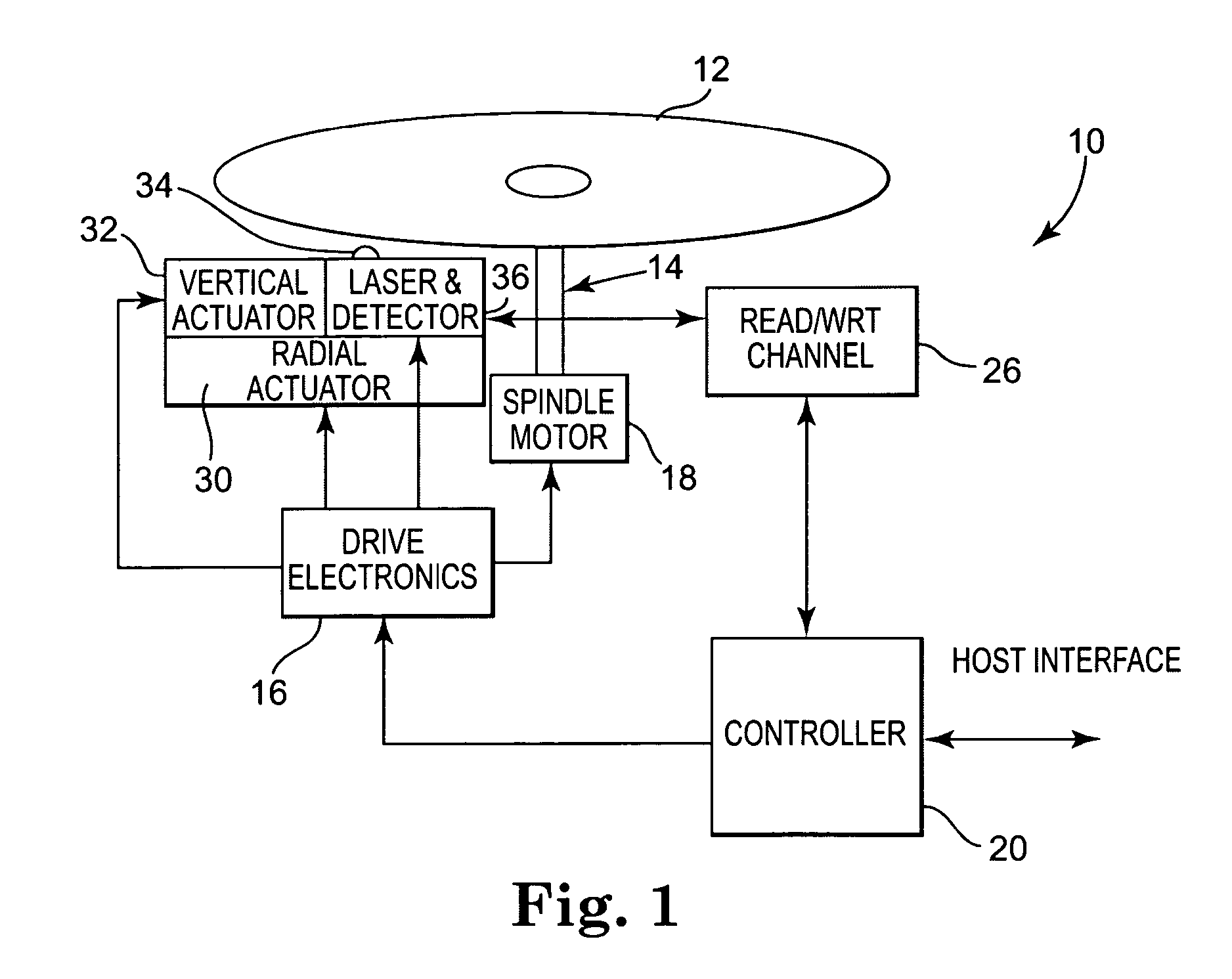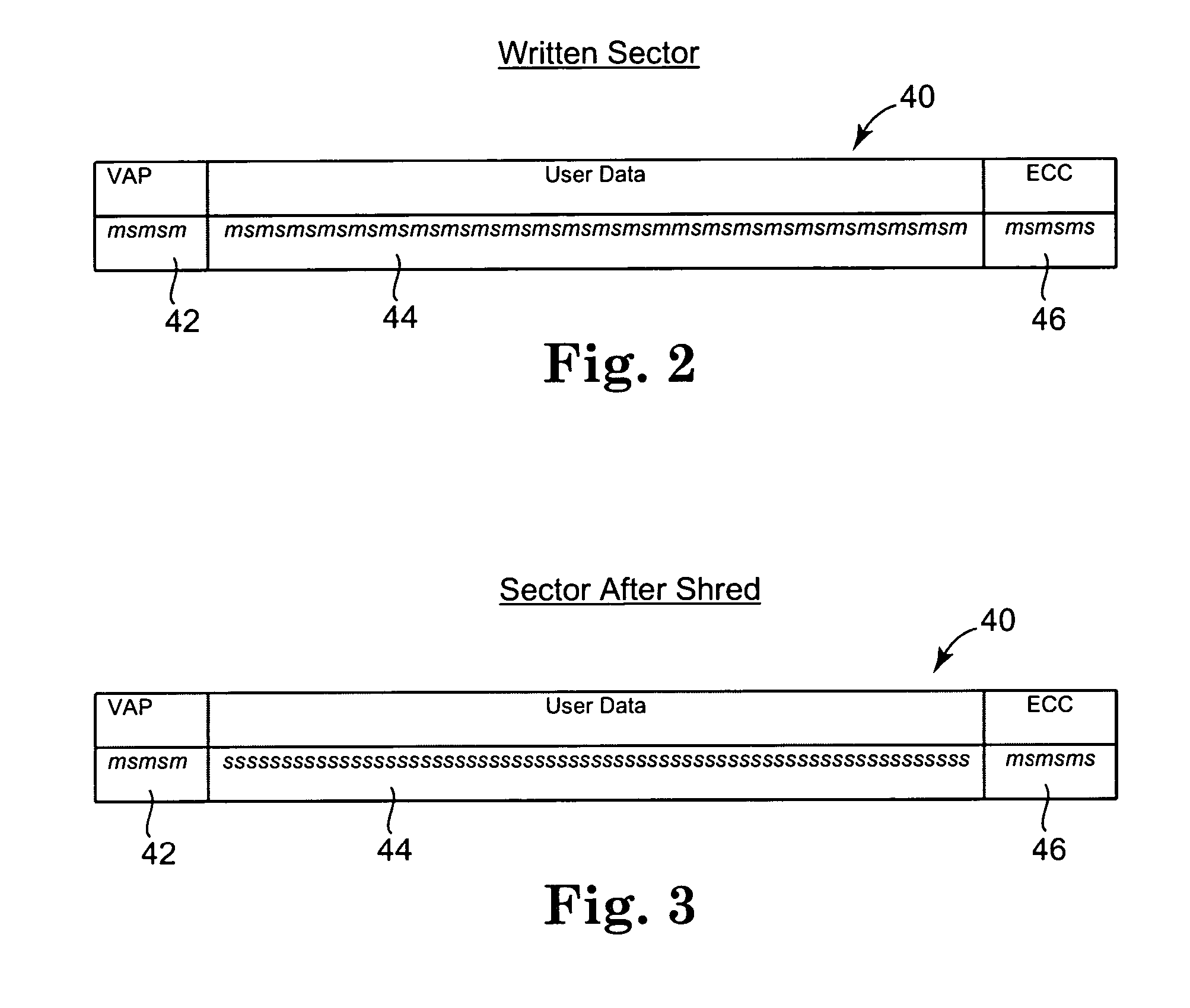Optical disk shred operation with detection
a technology of optical disk and detection, applied in the direction of optical discs, recording signal processing, instruments, etc., can solve the problems of insufficient data protection, insufficient data protection, and insufficient data protection, etc., to achieve the effect of efficient and effective operation and dependent on the efficiency of such an operation
- Summary
- Abstract
- Description
- Claims
- Application Information
AI Technical Summary
Benefits of technology
Problems solved by technology
Method used
Image
Examples
Embodiment Construction
[0020] Again, the present invention relates to a data shredding methodology used within a data storage device. While the data storage device can take many forms, one exemplary system is shown in FIG. 1. Data storage device 10 utilizes a storage media 12, which in the preferred embodiment is an optical storage device. The use of optical storage media 12 has become well known and widely used in the industry because of its data storage capabilities and ease of access to data. In the present invention, the data storage media 12 is preferably removable, however could also be fixed within storage system 10. Storage media 12 is operably attached via a drive shaft 14 to a spindle motor 18. The drive shaft 14 is driven by spindle motor 18 which is controlled by drive electronics 16. Cooperating with drive electronics 16 are a laser assembly 36 including the laser itself (not shown), optics (not shown), and detection circuitry (not shown). Attached to laser assembly 36 are a radial actuator 3...
PUM
| Property | Measurement | Unit |
|---|---|---|
| areas | aaaaa | aaaaa |
| area | aaaaa | aaaaa |
| time | aaaaa | aaaaa |
Abstract
Description
Claims
Application Information
 Login to View More
Login to View More - R&D
- Intellectual Property
- Life Sciences
- Materials
- Tech Scout
- Unparalleled Data Quality
- Higher Quality Content
- 60% Fewer Hallucinations
Browse by: Latest US Patents, China's latest patents, Technical Efficacy Thesaurus, Application Domain, Technology Topic, Popular Technical Reports.
© 2025 PatSnap. All rights reserved.Legal|Privacy policy|Modern Slavery Act Transparency Statement|Sitemap|About US| Contact US: help@patsnap.com



